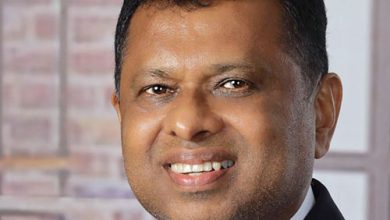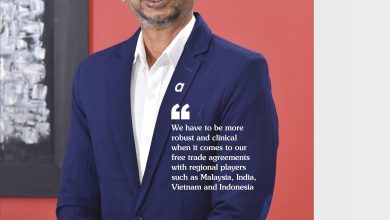COVER STORY
Shaping a Sustainable Sri Lanka
Tamara Rebeira explores Sri Lanka’s transition to a green-blue economy
An island that is blessed with an abundance of pristine beaches and rich biodiversity is at long last taking heed of the importance of the green-blue economy – and seemingly transitioning towards it.
This concept combines both principles and promotes sustainable economic development, by integrating the sustainable use of marine resources (blue) with the conservation and preservation of natural resources and ecosystems (green).
It seeks to integrate these two factors to create a more holistic approach to economic development.
By tapping into the potential of marine resources, adopting renewable energy, preserving biodiversity and encouraging sustainable agriculture, Sri Lanka may be able to forge a path towards a greener and more prosperous future.
Embracing a green-blue economy not only serves as an investment in the future but also a commitment to protect the natural beauty and resoures that Sri Lanka is blessed with.
The green economy encompasses the development and adoption of environmentally-friendly technologies, processes and practices. It drives eficiency improvements, reduces pollution and promotes the sustainable use of resources.
Meanwhile, the blue economy hinges on connecting the potential of the ocean and its resources in a sustainable manner. It includes activities such as sustainable fisheries, coastal tourism, renewable energy generation and marine biotechnology.
A central pillar of this concept is the promotion of renewable energy sources and innovation. Sri Lanka can reduce carbon emissions and help mitigate climate change through the use of solar, wind and hydropower generation, and by investing in clean energy infrastructure.
The agriculture sector is another pivotal pillar; it serves as a foundation for sustainable food production, prioritising practices that minimise environmental impacts and ensure long-term food security.
To put this concept into practice and achieve economic growth, the government, businesses, communities and the public must work together, to ensure that the principles of sustainability, equity and resilience are met.

Responsible waste management is another cornerstone of sustainability. Daniel Knapp introduced the concept of zero waste in the 1980s, paving the way for the widespread adoption of recycling as a common practice. Today, the simple act of segregating waste in our households has become familiar to us all.
Recycling is recognised as an essential component of sustainable living that’s integrated into waste management systems worldwide. By embracing responsible waste management practices, we can minimise waste generation, promote recycling and contribute to a circular economy model.
On a separate note, the government’s expectation of moving towards green finance was announced in Budget 2023. The vision was for funds gained through such bond issues to be used for renewable energy, energy efficiency, green buildings, clean transportation, sustainable water and wastewater management, and pollution prevention among others.
The country’s endeavours to transition to a blue economy are in strong alignment with global initiatives such as the UN’s Sustainable Development Goals (SDGs), Decade of Ocean Science for Sustainable Development (2021-2030) and Decade on Ecosystem Restoration (2021-2030).
Meanwhile, the minister of trade recently stated that a framework has been drawn up to sell green and blue bonds while the cabinet approved a decision to obtain a second party opinion on this move.
The minister noted that green bonds can be used to raise funds for renewable energy, green buildings, clean transport, sustainable water supply, tackle climate change, protect biodiversity and the environment while blue bonds would relate to marine environment improvement activities.
Moreover, the Asian Development Bank (ADB) has announced that it’s considering further concessionary funding and support for green bond issues as part of helping Sri Lanka recover from one of the worst economic crises in decades.
Chen Chen – who was the ADB’s Sri Lanka Country Director until the end of June – said steps are underway to prepare the groundwork to sell green or blue bonds after economic stability is restored.
Furthermore, the EU and Expertise France signed an agreement to set up a Green Policy Dialogue Facility (GPDF) to support the country’s ambition of developing a green and circular economy.
Along these lines, President Ranil Wickremesinghe recently stated that Sri Lanka needs fresh legislation to establish itself as a green economy – and as such, several new laws will be introduced this year.
In another progressive step, the Colombo Stock Exchange (CSE) introduced the listing and trading of green bonds for the first time on the stock market in April.
Embracing a green-blue economy not only serves as an investment in the future but also a commitment to protect the natural beauty and resources that Sri Lanka is blessed with
Commenting on the move, the CSE’s CEO Rajeeva Bandaranaike said: “As of January 2023, green bonds have globally raised US$ 2.5 trillion to support green and sustainable projects. Sri Lanka can tap into these funds and capitalise on [them] by attracting foreign investments into green bonds.”
Sri Lanka’s commitment to global sustainability objectives not only underscores its dedication to preserving the planet but also positions the country as an active contributor to tackling urgent environmental challenges on a world scale.
The emphasis on transitioning to a green-blue economy exemplifies Sri Lanka’s proactive stance in harmonising economic growth with environmental sustainability.
LMD’s green-blue special 29th anniversary edition highlights the significance of a sustainable Sri Lanka and sheds some light on the transformative potential of practices that have sustainability at their core.
By embracing this holistic approach, we can pave the way for a greener and more prosperous future, while inspiring others to follow suit in building a sustainable and resilient world.





